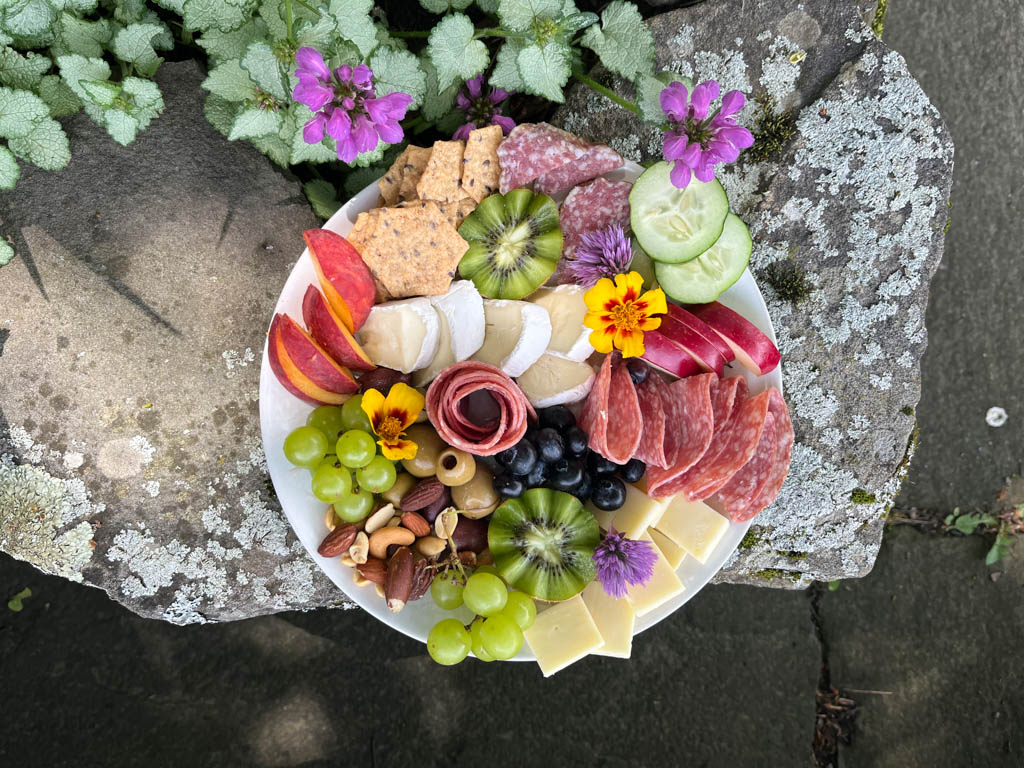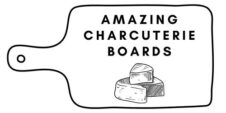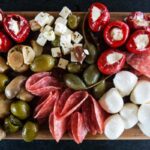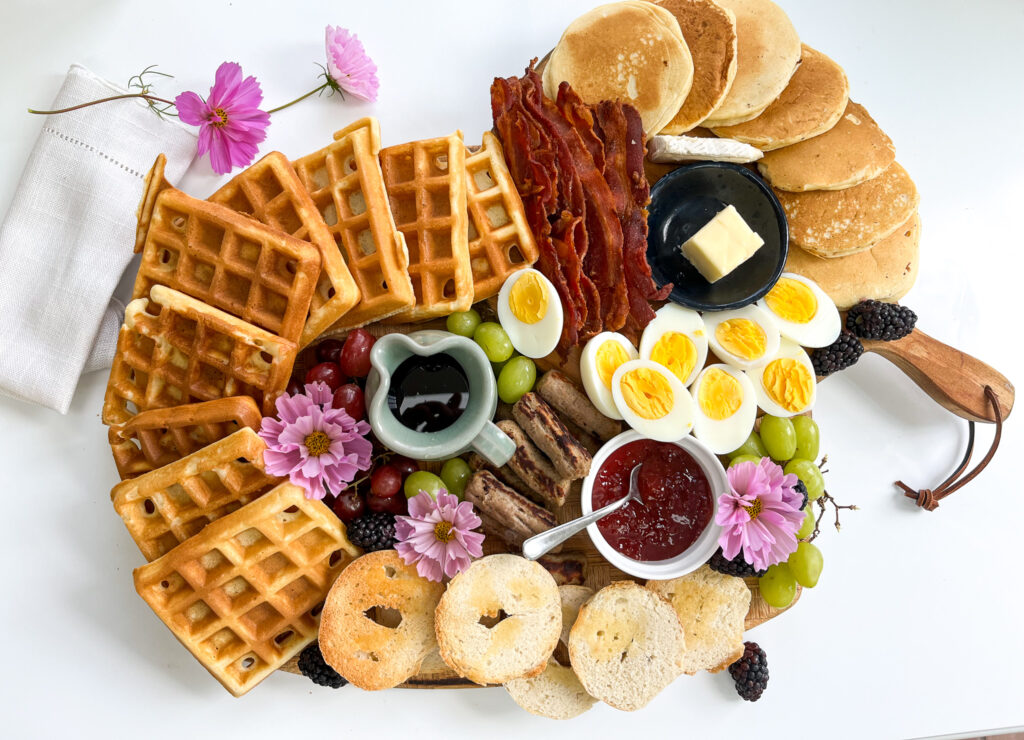Charcuterie boards are everywhere.
From dinner parties to restaurant menus, the modern charcuterie board is creative, delicious and can include almost any assortment of food you can imagine. The modern charcuterie board can be dinner, candy, cheese and meat, just fruit, or anything, but these boards have a long history across several cultures. Below you can find a complete charcuterie board history that outlines how the charcuterie board we created as well as a short history of some of the common components of the charcuterie board.
If you’re looking interesting charcuterie board, check out some charcuterie board ideas.
Contents
Early History of the Charcuterie Board
The term charcuterie dates back to the 15th century in France, and is derived from the French words: chair (flesh) and cuit (cooked). Charcuterie referred the shops that sold pork products. The charcuterie board history below outlines how these boards became the modern charcuterie boards of today.
The French were also the first to make the classic charcuterie board of cured meats displayed on a board. The process of creating cured meats dates back to 200 BCE when the Greeks and Romans began to salt and eventually smoke their meats, although salting foods for preservation likely dates back even further to the Egyptians. Initially, this was to extend the storage time of the meat and use every available piece of the animal.
While the origins of the charcuterie board was generally for casual or lower class situations, by the mid-1800’s, the cheese course displayed on platters and boards began to be common across many countries including France, England, and America. These boards were almost exclusively meats and cheese and were served at different times during the meal depending on the cultural norms of that country.
The charcuterie board continued to be served in a more casual setting for the working class. Cured meats, fruits, and/or pickled vegetables were often served as standard peasant laborer fare along with beer and wine. These items were easy to transport and could be eaten with just the hands. While each country had difference cheese, meats, pickled foods and fruit, the ideas of a ‘ploughmans’s lunch’ dates back to medieval times. Over time more items were added to these simple boards such as apples, mustard, meat pies, and bread.
Charcuterie Board History up to the Modern Board
While a meal or snack served on a board with cheese and meat has been around for years, the modern version of the charcuterie board has taken off in just the last few decades. The mid 1900’s saw a surge in interest of foreign foods as the transportation and storage of food continued to improve. Suddenly people in the United States were able to eat French cheese and serve Italian meats in their own dining room.
The 1990s saw an interest in raw foods and the artistic displays of todays charcuterie board began to unfold. Today the term charcuterie board refers to a wide range of creative food displays that can be served as snacks, appetizers or even complete meals. While cheese and meat still dominate many board in creative displays such as a ‘meat rose’ or a sliced cheese wheel, a modern charcuterie board can also have goldfish crackers, Halloween candy, or soup and bread. These boards are commonly served in the home but have become standard at restaurants, weddings, and other events. Quite truly – it’s not a party without a charcuterie board.
In addition to the wide popularity of the charcuterie board, you will also find these boards served under a wide range of names including: snacking boards, charcuterie platters, charcuterie tables, meal boards, charcuterie cones, and more. You can find charcuterie board inspiration in countless places including our favorite – Pinterest.

Common Charcuterie Board Ingredients
While almost every type of food can be found on a charcuterie board. The most common charcuterie board ingredients include:
- Cheese
- Meat
- Crackers
- Bread
- Fruit (dried and fresh)
- Vegetables
- Pickles
- Chocolate
- Nuts
- Olives
- Bread
You can see more details on charcuterie board ingredients on our ingredient guides.
History of Charcuterie Board Components
While the charcuterie board history began in the 1500s, the common ingredients served on these boards have histories that date back much further. Cheese, meats, and the fresh ingredients included on most boards were developed within the rich food cultures of countries around the world.
History of Cheese
The exact timing of early cheese creation is unknown, but it is possible that the practice of making cheese dates back about 10,000 year when sheep were first domesticated. Early records indicate that Feta was eaten and created in ancient Egypt, and it’s possible that storing milk in animal bladders where the cheese making enzyme rennet is found, caused the early creation of cheese. There is clear evidence of cheese during the Roman Empire.
There is little evidence that the creation of cheese occurred in the Americas and Asia, although China has it’s own history of cheesemaking, specifically a cheese called Rushan. Today cheese has been adopted by cultures around the world. The creation of most of the common cheese we eat today: cheddar, swiss, parmesan, and more are relatively new on the cheese scene.
Today, cheesemaking around the world is a series business and the variety of the cheese aisle in the grocery store can attest to the many tastes and practices of making cheese. The charcuterie board is the perfect place to showcase the wide assortment of cheese alongside meats, vegetables, and crackers.
You can learn more about cheese, but when you are selecting cheese for your charcuterie board, the best cheese is whatever you like to eat the most – we love to include brie, cheddar, gouda and more.

History of Cured Meat
The process of curing or preserving meat dates back even further that cheesemaking and definintely predates the charcuterie board history described above. Most of the preservations of meat involve processes that dehydrate the meat, including salting, smoking, drying, etc, or oil. This process was imperative during a time that lacked refrigeration. Traditionally, there were all types of meat used for preservation including fish dating back to around 3,000 BCE.
In the early 1900s the use of nitrites and nitrates improved the process by improving both color and taste allowing for longer, safer, and simply better dehydration processes. Each culture developed their own favorite cured meat products, but today’s charcuterie boards often include:
- Dry Cured Meats
- Salami or Saucisson
- Rillettes
- Mouses
- Pates
The Charcuterie Board
While many early charcuterie boards were simply rough hewn boards or plates, today’s charcuterie boards range from simple to fancy. Many modern boards aren’t boards at all, but made from stone or other material. Charcuterie boards also range in size from mini boards that are just a few inches to huge boards or full tables laid right on butcher paper and set in tiers. As charcuterie boards have gained popularity, you can find charcuterie board to purchase at almost any home goods or kitchen store.

Modern Charcuterie Boards
Today’s modern charcuterie boards are getting more creative and fancy by the day and even though the charcuterie board history starts with basic foods, cheese and cured meats, a charcuterie board can have truly any ingredient you can imagine. Today’s charcuterie boards can be made from candy, fruit, dessert, breakfast, or even dinner.
Charcuterie boards are often served at weddings, parties, cocktail parties, and any gathering. We love to serve a charcuterie board as our dinner and either snack throughout the night, or serve an entire meal on the board. You can even find shops serving premade charcuterie boards, or restaurants that specialize in charcuterie boards.
Looking for more charcuterie board history? Check out our post comparing antipasto and charcuterie.









Pingback: Antipasto vs Charcuterie: A Complete Guide - Amazing Charcuterie Boards